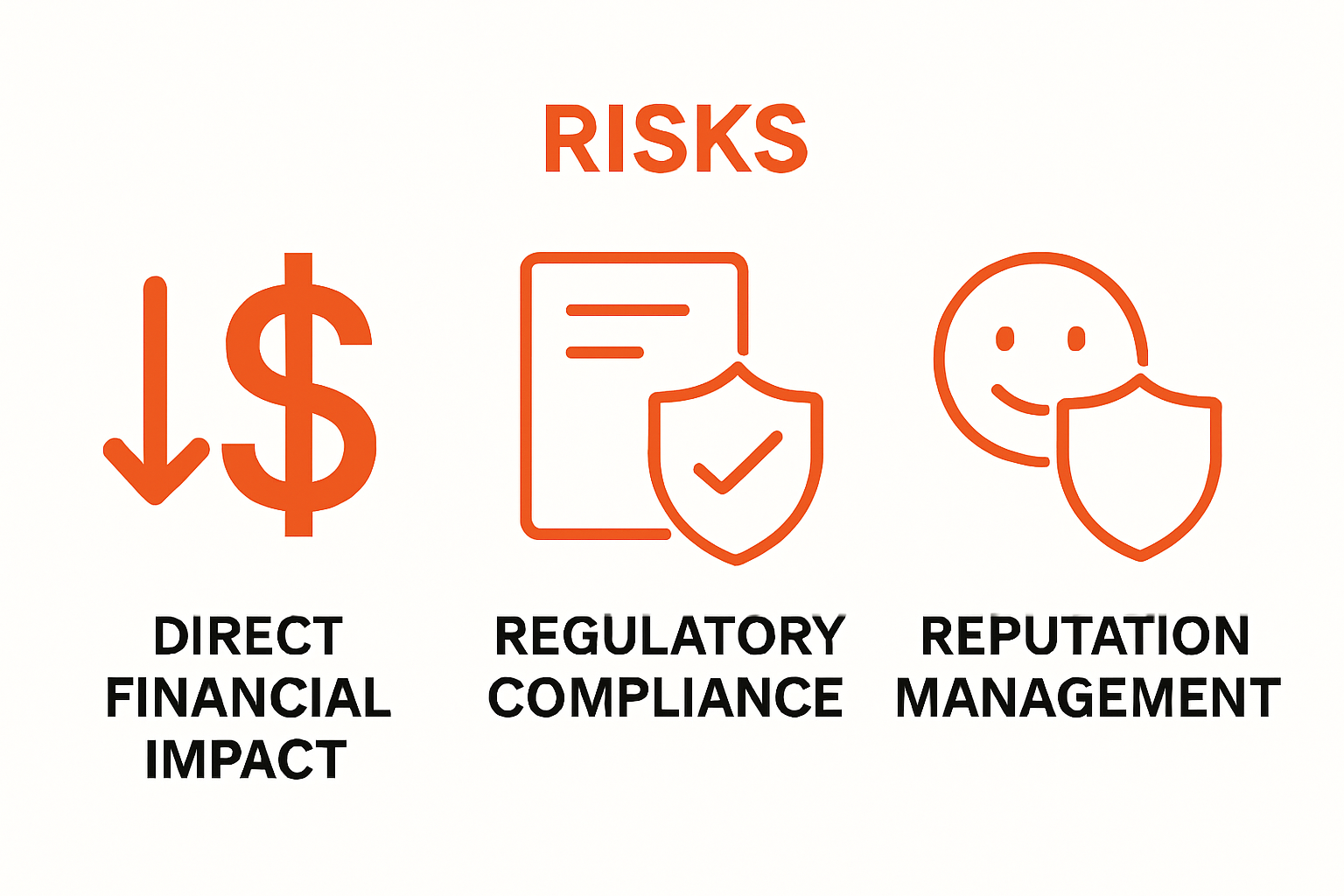Understanding Cybersecurity Trends 2025 for Businesses
Cybersecurity is moving at lightning speed as digital transformation sweeps through every part of business. You might expect firewalls and antivirus to keep you safe but those familiar defences are now only half the story. The real surprise is that AI-driven security systems are identifying threats in real time, changing how companies defend themselves even before an attack happens and only the businesses who adapt will keep up.
Table of Contents
- The Evolution Of Cybersecurity: What You Need To Know
- Why Cybersecurity Trends Matter: Implications For Your Business
- Cyber Threat Landscape: How It Is Changing In 2025
- Emerging Technologies In Cybersecurity: Key Concepts And Tools
- Preparing For The Future: Strategic Considerations For Businesses
Quick Summary
| Takeaway | Explanation |
|---|---|
| Embrace a proactive cybersecurity strategy | Transition from reactive defenses to proactive measures like continuous monitoring and adaptive security frameworks. |
| Invest in emerging technologies | Utilize AI and machine learning for threat detection and automated responses to adapt to the evolving threat landscape. |
| Adopt Zero Trust principles | Verify every user and device, regardless of location, to strengthen security against potential breaches and vulnerabilities. |
| Recognize cybersecurity as a business priority | Treat cybersecurity as a strategic investment that enhances operational resilience and protects assets, not just an IT expense. |
| Focus on ecosystem vulnerability assessments | Regularly evaluate and map vulnerabilities across digital supply chains to identify and mitigate emerging risks swiftly. |
The Evolution of Cybersecurity: What You Need to Know
Cybersecurity represents a dynamic and continuously shifting technological discipline designed to protect digital systems, networks, and data from increasingly sophisticated threats. As digital transformation accelerates, businesses must understand how cybersecurity strategies have evolved to safeguard their critical assets effectively.
The Shifting Cybersecurity Landscape
Historically, cybersecurity was a reactive practice focused on building defensive walls around network perimeters. Organizations implemented firewalls and antivirus software, believing these tools could comprehensively protect against potential intrusions. However, the modern cybersecurity landscape has dramatically transformed, recognizing that threats are no longer confined to traditional boundaries.
Today’s cybersecurity trends reflect a more holistic, proactive approach. According to Gartner Research, contemporary strategies emphasize continuous monitoring, threat intelligence, and adaptive security frameworks that can rapidly respond to emerging risks.
Key Technological Adaptations
The evolution of cybersecurity trends in 2025 highlights several critical technological adaptations:
- Artificial Intelligence Integration: Machine learning algorithms now detect anomalies and potential security breaches in real time
- Zero Trust Architecture: Security models that verify every user and device, regardless of their location or network connection
- Cloud Security Optimization: Advanced protocols designed to protect distributed digital infrastructure across multiple environments
Businesses must recognize that cybersecurity is no longer a static defense mechanism but a dynamic, intelligent system that anticipates and neutralizes potential threats. The most successful organizations will embrace flexible, intelligence-driven security strategies that can adapt to the rapidly changing digital ecosystem.
Understanding these evolutionary patterns allows businesses to develop robust, forward-looking cybersecurity approaches that protect their most valuable digital assets while enabling technological innovation and growth.
To provide a clear overview of the core technological advancements shaping cybersecurity strategies in 2025, the table below outlines the major features and their functions as discussed in the article.
| Technology Feature | Function / Benefit |
|---|---|
| Artificial Intelligence Integration | Enables real-time detection of anomalies and adaptive responses to security breaches. |
| Zero Trust Architecture | Verifies every user and device regardless of location, minimising breach risk. |
| Cloud Security Optimisation | Secures distributed infrastructure across multiple digital environments. |
| Adaptive Machine Learning Systems | Provides automatic threat detection and response through dynamic algorithms. |
| Behavioural Analytics | Identifies unusual user/system behaviour to detect threats early. |
| Automated Threat Intelligence | Gathers and analyses global data to pre-emptively identify emerging risks. |
Why Cybersecurity Trends Matter: Implications for Your Business
In an increasingly digital world, understanding cybersecurity trends is not just a technical requirement but a critical business survival strategy. As digital threats become more sophisticated and pervasive, organizations must recognize the profound implications these evolving trends have on their operational resilience, financial stability, and reputation.
Financial and Operational Risk Management
Cybersecurity is no longer merely an IT concern but a fundamental business risk management issue. According to the U.S. Government Accountability Office, cybersecurity lapses can result in substantial financial losses, operational disruptions, and significant reputational damage. Small and medium enterprises are particularly vulnerable, with potential breach costs potentially exceeding their annual technology budgets.

Businesses face multifaceted risks that extend beyond immediate financial losses:
- Direct Financial Impact: Potential monetary losses from ransomware attacks, data breaches, and system downtime
- Regulatory Compliance: Potential legal penalties and fines for inadequate data protection
- Reputation Management: Long-term customer trust erosion following security incidents
Strategic Business Implications
Modern cybersecurity trends demand a proactive, strategic approach. Organizations must view security not as a cost center but as a critical enabler of digital transformation. Explore our comprehensive cybersecurity essentials to understand how strategic security investments can protect and propel your business.
Embracing emerging cybersecurity trends allows businesses to:
- Protect intellectual property and sensitive customer data
- Enable secure digital innovation and technological adoption
- Build trust with stakeholders through demonstrable security commitments
Businesses that treat cybersecurity as a strategic priority rather than a reactive measure will be better positioned to navigate the complex digital landscape of 2025 and beyond. By understanding and implementing cutting-edge cybersecurity strategies, organizations can transform potential vulnerabilities into competitive advantages.
Cyber Threat Landscape: How It Is Changing in 2025
The cybersecurity landscape is undergoing a profound transformation, with emerging technologies creating both unprecedented opportunities and complex challenges for businesses worldwide. Understanding the evolving nature of cyber threats is crucial for developing robust defensive strategies that can adapt to an increasingly sophisticated digital environment.
Emerging Threat Vectors
Modern cyber threats are no longer confined to traditional hacking techniques. According to Cybersecurity Ventures, the threat landscape in 2025 is characterized by increasingly intelligent and adaptive attack methodologies that leverage advanced technologies.
Businesses must be aware of the following critical emerging threat categories:
- Artificial Intelligence Powered Attacks: Machine learning algorithms enabling more sophisticated and autonomous cyber intrusions
- Supply Chain Vulnerabilities: Complex digital ecosystems creating multiple potential entry points for malicious actors
- Quantum Computing Threats: Potential breakthroughs that could compromise existing encryption technologies
Technology-Driven Threat Evolution
The convergence of emerging technologies is fundamentally reshaping cyber threat dynamics. Cybercriminals are developing more nuanced and targeted approaches that exploit interconnected digital systems. Learn more about protecting your digital infrastructure to understand how these evolving threats might impact your organization.
Key characteristics of the 2025 cyber threat landscape include:
- Increased automation and AI-driven attack strategies
- More sophisticated social engineering techniques
- Heightened focus on exploiting IoT and cloud infrastructure vulnerabilities
Businesses must recognize that cybersecurity is no longer about building impenetrable walls but developing adaptive, intelligent defense mechanisms that can anticipate and neutralize emerging threats in real time. The most successful organizations will be those that view cybersecurity as a dynamic, strategic capability rather than a static technological solution.
Emerging Technologies in Cybersecurity: Key Concepts and Tools
Cybersecurity technologies are rapidly evolving, transforming how organizations defend against increasingly sophisticated digital threats. The intersection of advanced technologies creates innovative approaches to security that go far beyond traditional defensive mechanisms.
Intelligent Defense Technologies
Advanced cybersecurity technologies leverage artificial intelligence and machine learning to create dynamic, predictive security frameworks. According to the National Institute of Standards and Technology, emerging technologies are fundamentally redesigning how organizations approach digital protection.
Key intelligent defense technologies include:
- Adaptive Machine Learning Systems: Real-time threat detection and automatic response mechanisms
- Behavioral Analytics: Advanced algorithms that identify anomalous user and system behaviors
- Automated Threat Intelligence: Platforms that continuously gather and analyze global cybersecurity data
Next Generation Security Frameworks
Modern cybersecurity is transitioning from reactive to proactive protection strategies. Explore our comprehensive cybersecurity solutions to understand how cutting-edge technologies can transform your security infrastructure.
Businesses are now implementing advanced security frameworks that:
- Integrate AI-powered threat prediction
- Enable continuous monitoring across distributed digital environments
- Provide real-time vulnerability assessment and mitigation
The future of cybersecurity lies in creating intelligent, adaptive systems that can anticipate and neutralize threats before they manifest. Organizations that embrace these emerging technologies will develop more resilient, responsive security strategies capable of protecting complex digital ecosystems.

Preparing for the Future: Strategic Considerations for Businesses
As digital landscapes become increasingly complex, businesses must develop comprehensive cybersecurity strategies that anticipate and mitigate emerging technological risks. Strategic preparation is no longer optional but a critical component of organizational resilience and long-term sustainability.
Holistic Risk Management Approach
According to the World Economic Forum’s Global Cybersecurity Outlook, organizations must adopt a multifaceted approach to cybersecurity that extends beyond traditional defensive mechanisms. The evolving threat landscape demands a proactive, integrated strategy that considers both technological and human factors.
Key strategic considerations for comprehensive risk management include:
- Ecosystem Vulnerability Assessment: Continuously evaluate and map potential vulnerabilities across entire digital supply chains
- Leadership Alignment: Ensure cybersecurity strategies are integrated into broader organizational governance
- Cultural Transformation: Develop organization-wide cybersecurity awareness and accountability
Strategic Investment and Capability Building
Businesses must view cybersecurity as a strategic investment rather than a cost center. Explore our strategic cybersecurity planning resources to understand how to build robust, future-ready security capabilities.
Critical strategic considerations for capability development include:
- Developing adaptive talent and skills in emerging cybersecurity technologies
- Creating flexible technological infrastructures that can rapidly respond to new threats
- Establishing robust governance frameworks that prioritize continuous learning and improvement
Successful organizations will recognize that cybersecurity is not just about technology, but about creating a resilient, adaptive ecosystem that can anticipate, understand, and effectively respond to an ever-changing digital threat landscape.
Power Up Your Business with Future-Ready Cybersecurity
Worried about the pace and complexity of cyber threats outlined in our article Understanding Cybersecurity Trends 2025 for Businesses? If your business is feeling the strain of keeping up with emerging risks like artificial intelligence powered attacks, cloud vulnerabilities, or the need for adaptive security, you are not alone. Many South African professional firms and mid-sized organisations struggle to balance innovation with constant vigilance. Even one overlooked vulnerability can threaten your revenue, compliance, and client trust.
Techtron can help you stay ahead. Our fully managed IT services are built to address the modern security landscape, offering proactive monitoring and comprehensive digital risk management tailored for engineering, financial, and growing enterprises. You can discover how our cybersecurity expertise transforms complexity into peace of mind. If you are ready to stop worrying about evolving threats and start focusing on your business, visit Techtron’s main site now and take the next step toward secure, stable operations.
Frequently Asked Questions
What are the key cybersecurity trends for businesses in 2025?
Modern cybersecurity trends for 2025 include the integration of artificial intelligence, the adoption of zero trust architecture, and the optimization of cloud security to protect distributed digital environments.
Why is a proactive cybersecurity strategy important for organizations?
A proactive cybersecurity strategy is essential for organizations as it helps them anticipate and neutralize potential threats, minimizing financial losses, reputational damage, and operational disruptions from cyber incidents.
How can businesses manage financial risks associated with cyber threats?
Businesses can manage financial risks by viewing cybersecurity as a strategic investment, ensuring compliance with regulatory requirements, and implementing robust security protocols that protect sensitive data and prevent breaches.
What emerging technologies are shaping the future of cybersecurity?
Emerging technologies like adaptive machine learning systems, behavioral analytics, and automated threat intelligence platforms are transforming cybersecurity by enabling real-time threat detection and continuous monitoring for enhanced protection.